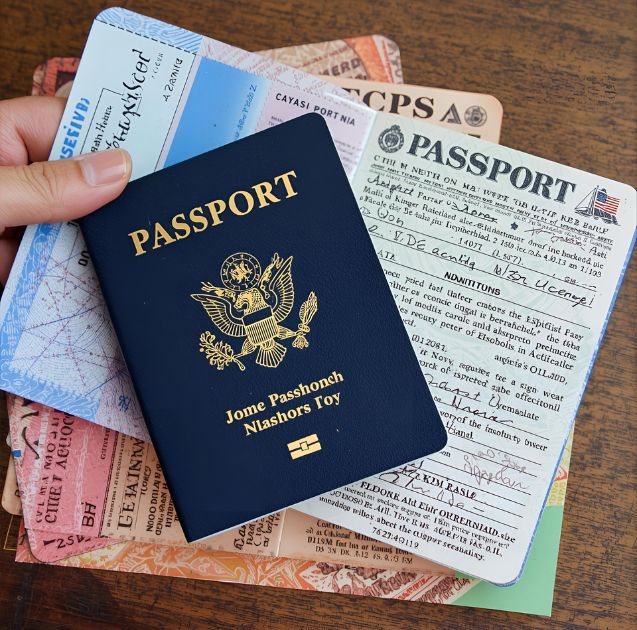
The idea of travel sparks a unique excitement. It’s a flicker of wanderlust that can ignite from a stunning photograph, a friend’s story, or a scene in a movie. But between that initial spark and the feeling of your feet on foreign soil lies a process that can feel as vast and intimidating as the world itself: planning. Many would-be adventurers get stuck in this phase, paralyzed by questions about budgets, bookings, and logistics. This is where the dream often fades.
But it doesn’t have to. Trip planning isn’t a chore to be endured; it’s the first stage of your adventure. It’s the process of turning a vague “someday” into a tangible, thrilling reality. This comprehensive blueprint is designed to demystify the entire process, breaking it down into manageable, actionable steps. Whether you’re planning a solo backpacking trip across Southeast Asia, a romantic getaway to Paris, or a family vacation to the national parks, this guide will provide the structure and confidence you need to plan like a seasoned pro. Let’s build your dream trip, one step at a time.
Step 1: The Spark – Defining Your Dream Destination

Before you can create a budget or book a flight, you need a destination. This initial phase is all about inspiration and introspection. Don’t just think about where you want to go; think about why you want to go.
Ask Yourself the Right Questions:
- What’s your travel style? Are you seeking adrenaline-pumping adventure (hiking, diving, exploring), cultural immersion (museums, historical sites, local cuisine), ultimate relaxation (beaches, spas, resorts), or a vibrant urban experience (city life, nightlife, shopping)?
- Who are you traveling with? A solo trip offers ultimate freedom, a trip with a partner requires compromise, and a family vacation needs kid-friendly activities. Your travel companions will heavily influence your choice.
- What’s your “why”? Are you looking to escape, to learn, to connect, or to challenge yourself? Understanding your motivation will help you choose a destination that truly resonates.
Use resources like Pinterest, Instagram travel accounts, travel blogs, and documentaries for inspiration. Create a mood board or a simple list of 5-10 potential destinations. Then, do a quick preliminary check on factors like general safety, political climate, and travel time to narrow it down to your top two or three choices. This is the fun part, so allow yourself to dream big!
Step 2: The Foundation – Building a Realistic Budget
Money is often the biggest hurdle in travel, but it doesn’t have to be a barrier. A well-planned budget is a tool of empowerment, giving you control and clarity. It’s time to move from a vague cost estimate to concrete numbers.
Breakdown Your Major Expenses:
- Transportation (The Big Ticket): This is usually flights, long-distance trains, or car rentals. Use tools like Google Flights or Skyscanner to get a baseline cost for your potential destinations. Look at prices for different weeks or months to see how they fluctuate.
- Accommodation: This is your second-largest expense. Research the average cost per night for different types of lodging in your chosen area. A hostel will cost significantly less than a boutique hotel. A vacation rental might be cheaper for a longer stay or for a group. Budget for the total number of nights you plan to be away.
- Daily Spending (Per Diem): This is the most variable part of your budget. It covers food, local transport (subways, buses, taxis), activities, entrance fees, and souvenirs. Research is key here. A reasonable estimate for a budget-conscious traveler in Southeast Asia might be $30-$50 per day, while in Western Europe it could be $75-$150 or more. Multiply your estimated daily cost by the number of days you’ll be traveling.
- Pre-Trip Costs: Don’t forget these! This category includes passport renewals, visa fees, travel insurance, necessary vaccinations, and any specific gear you need to buy (like hiking boots or a new suitcase).
Add a 10-15% buffer to your total calculated budget for unexpected costs. Once you have a target number, create a savings plan. Determine how much you need to save each month and be disciplined about setting it aside. Having a clear financial goal makes saving much easier.
Step 3: The Timeline – Deciding When & How Long
With a destination and a budget in mind, it’s time to pin down the specifics of your timeline. The timing of your trip can dramatically affect both your budget and your experience.
Key Timing Considerations:
- Peak Season vs. Shoulder Season vs. Off-Season: Peak season (like summer in Europe or holidays) offers the best weather but comes with high prices and large crowds. Off-season has the lowest prices but may have undesirable weather. The sweet spot is often the “shoulder season” — the months just before and after peak season — which offers a great balance of good weather, fewer crowds, and lower prices.
- Trip Duration: How long can you realistically be away, considering work, budget, and personal commitments? Be mindful of travel time. For a long-haul flight, a one-week trip might mean you spend two full days just getting there and back. A longer trip allows for a more relaxed pace and deeper exploration. If you only have a week, it might be wiser to choose a destination closer to home.
Step 4: The Logistics – Booking Flights & Accommodation
This is when your trip starts to feel real. With your dates and destination locked in, it’s time to make your major bookings. A general rule of thumb is to book international flights 3-6 months in advance for the best prices.
Smart Booking Strategies:
- For Flights: Use flight comparison websites, but also check the airline’s official site. Use a private or incognito browser window to search, as some sites track your searches and may increase prices. Be flexible with your dates by a day or two if possible; it can save you hundreds. Consider flying into a larger, nearby airport and taking a train to your final destination.
- For Accommodation: Book your first few nights in advance, especially if you’re arriving late at night. For longer trips, you might prefer booking as you go for more flexibility. Read recent reviews carefully. Location is critical; paying a little more for a central location can save you significant time and money on transportation.
Step 5: The Itinerary – Crafting Your Daily Plan
An itinerary is your roadmap, but it shouldn’t be a rigid script. The best itineraries strike a balance between must-do activities and spontaneous discovery.
Building a Balanced Itinerary:
- Prioritize Your Must-Sees: Make a list of the top 3-5 things you absolutely cannot miss. These are your anchors.
- Group Activities by Location: Look at a map and plan your days by neighborhood or area. This prevents you from wasting time and energy crisscrossing a city.
- Don’t Over-schedule: The biggest mistake rookie planners make is trying to cram too much into one day. Plan for one major activity in the morning and one in the afternoon, leaving the evening free. This leaves room for getting lost, discovering a charming cafe, or simply resting.
- Book in Advance: For world-famous attractions like the Eiffel Tower or the Colosseum, book your tickets online weeks or even months ahead to avoid spending hours in line.
Step 6: The Paperwork – Passports, Visas & Insurance

This step is non-negotiable and requires careful attention to detail. Overlooking paperwork can derail your trip before it even begins.
- Passport: Check your passport’s expiration date. Many countries require your passport to be valid for at least six months after your planned departure date from their country. If you need to renew, start the process immediately, as it can take months.
- Visas: Research the visa requirements for your destination based on your citizenship. Some countries offer a visa-on-arrival, while others require a lengthy application process in advance. Check the official embassy or consulate website for the most accurate information.
- Travel Insurance: This is an absolute must. It’s not just for medical emergencies; a good policy will also cover trip cancellations, lost luggage, and travel delays. The small cost is worth the immense peace of mind.
Step 7: The Packing Puzzle – What to Bring (and What to Leave)
The goal of packing is not to bring everything you might possibly need, but to bring exactly what you need. Smart packing saves you from back pain and excess baggage fees.
Core Packing Principles:
- Check the Weather: Look at the forecast for your destination and pack accordingly. Always bring layers.
- Create a Versatile Wardrobe: Choose clothes in a complementary color palette so you can mix and match to create multiple outfits from fewer items.
- The Rule of Three: For a longer trip, consider packing no more than three pairs of shoes: one for walking, one for evenings/smarter occasions, and one for a specific activity (like hiking boots or sandals).
- Pack a Med Kit: Include basics like pain relievers, band-aids, antiseptic wipes, and any personal prescription medications (in their original bottles).
- Electronics: Don’t forget a universal power adapter and a portable power bank. They are lifesavers.
Step 8: The Final Countdown – One Week to Go
The excitement is building! Use the last week to handle all the final details so you can leave with a clear mind.
Your Pre-Departure Checklist:
- Make photocopies and digital copies of your important documents (passport, visa, flight confirmations, hotel bookings). Save them to a cloud service like Google Drive or Dropbox.
- Notify your bank and credit card companies of your travel dates to avoid your cards being frozen for suspicious activity.
- Download offline maps, translation apps, and any entertainment for your flight.
- Confirm your flights and check in online if possible.
- Charge all your electronics and pack your chargers in your carry-on.
- Share your itinerary with a friend or family member back home.
Conclusion: Embrace the Journey
You’ve done it. You’ve moved from a fleeting dream to a fully-realized plan. By following this blueprint, you’ve taken control of the process, turning potential chaos into organized excitement. Remember that planning is not about eliminating spontaneity; it’s about creating a solid foundation from which you can confidently leap into the unknown. The world is waiting. Now go and have the adventure of a lifetime.
Ready to explore the world on your own terms? The Ultimate Guide to Solo Travel: Embrace the Adventure & Travel with Confidence offers practical tips and inspiring stories to help you navigate solo journeys with ease and excitement.




Leave a Reply